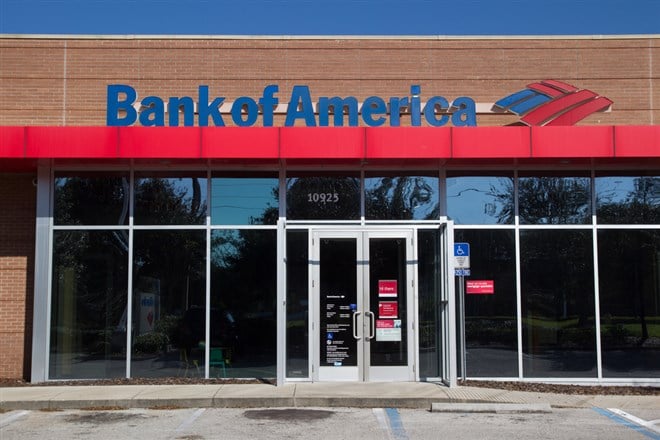
When everyday citizens got a whiff of what the collapse of Silicon Valley Bank (NASDAQ: SIVB) could mean for their personal checking accounts held at local small banks, a craze unfolded affecting many of these small financial institutions without reasonable cause.
On one end markets are seeing modern-day traders and investors who are up to date with developments and alternatives jump to alternative money storage solutions like Crypto, as seen in Bitcoin's price jump. However, on the other end lies the vast majority of the population who still do not fully understand the implications of crypto, nor would they feel comfortable navigating the platforms built to hold currency values in the derived coins. This side of the market is looking to flee from the seemingly unstable smaller banks and, perhaps, deposit their hard-earned cash with the time-tested and household names that are "too big to fail."
When a piece of America goes on sale, investors better pay attention
Bank of America (NYSE: BAC) is one of those time-tested household names that people may be fleeing to for safety. As indices have a certain gravity to them, even the highest quality businesses that may have nothing to do with the root cause of the recent declines, everything gets dragged down with the sector, despite reasoning and logic. Luckily for patient value investors, this is where the bulk of the fun lies.
The last time that Bank of America traded this cheaply was at the start of the year 2021, when the stock reached a mouth-watering Price to Earnings ratio of 8.0x (for reference, this stock and the sector usually trade around 15-18x) and also touched a hair below its then book value per share of $31.56, computed as the total shareholder's equity divided by the amount of diluted shares outstanding at the time. This year, the stock has touched a recent low of $28.00, which translates to a subsequent Price to Earnings ratio of 9.0x and a hefty discount to its updated book value per share of $33.45, according to their latest financial reports.
The first time around, the stock experienced a rally of nearly 66% to its highs of $50 per share in 2021-2022, and while fundamental factors played a big role in the steamy momentum, the mere discounted price of the shares was the catalyst that initially brought in the influx of buy orders in the first place. Could history repeat itself?
Tailwinds and ducks lined in a row
While all banking stocks sold off for good enough reason to fear subsequent contagion effects from the collapse in Silicon Valley Bank, Bank of America's business nature offers a cut and dry reply to these fears. Corporate deposits at Bank of America (those held by big corporations across the globe) represent three times - on average - the amount of deposits held by everyday consumers, so even if everyone runs to pull money out of the bank (when it is shown to be quite the opposite) the bank would shrug for a few days but ultimately be okay.
Retaining earnings and total assets ultimately drives the book value (shareholders' equity) within a bank's balance sheet. Given that 60-80% of Bank of America's revenues come from interest income, which is earned on loans ranging from mortgages to credit cards and treasury bills held, the bank can expect greener pastures ahead now that the Fed is raising interest rates and intends to keep them there for a little while. While demand for mortgages may be slowing down, according to a declining MBA mortgage market index, any new loan business and credit card accounts that the bank may earn will yield handsome returns.
The second bulk of revenue at the bank is generated from commissions and fees on their investment banking and trading activities. While banking deals may slow down along with mortgages due to secular trends, heightened volatility across financial markets may keep the trading and market-making fees churning.
For those familiar with fractional reserve banking, the more deposits a bank holds, the more lending activity the bank can undertake by pooling deposits and providing loans or financing as a byproduct of leveraging (hopefully responsibly) depositor funds. Bank of America has maintained a very disciplined level of operating leverage and depositor demographics to avoid defaults and write-offs, achievements highlighted in their latest investor presentation.
These activities are just as important, as U.S. banks have all started to increase their yields offered on savings accounts, a pivot which may incentivize more depositors and users to bank with names such as Bank of America. The more depositors sign up for these added benefits at the bigger banks, the more loans and products the banks can offer in order to drive interest income and fees earned on such activities. Sounds like Bank of America is set for a repeated bounce after all.
Buying Ranges
Forming a triple-bottom pattern on a weekly chart, bottoming indicators such as RSI and Stochastics, a "Golden Ratio" in weekly Fibonacci retracements on top of analysts pointing to a 40% upside in the stock. All of these technical factors, along with the fundamentals lined up as described, may be pointing to actionable button-pressing from so called value investors.